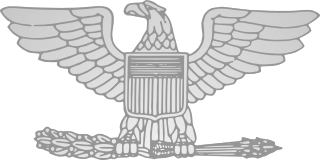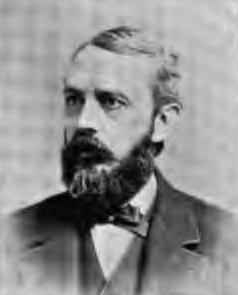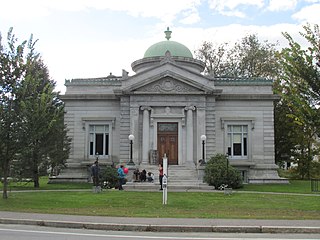Life
The family removed to New York in 1824, and eventually settled in Lima, in Livingston County, in 1829. He attended the district schools and Genesee Wesleyan Seminary, and graduated from Union College in 1842. Then he studied law with John Young, was admitted to the bar in 1843, and commenced practiced in Geneseo in partnership with Young who was elected Governor of New York in 1846. Wood was District Attorney of Livingston County from 1854 to 1856.

New York is a state in the Northeastern United States. New York was one of the original thirteen colonies that formed the United States. With an estimated 19.54 million residents in 2018, it is the fourth most populous state. To distinguish the state from the city with the same name, it is sometimes called New York State.

Union College is a private, non-denominational liberal arts college located in Schenectady, New York. Founded in 1795, it was the first institution of higher learning chartered by the New York State Board of Regents. In the 19th century, it became the "Mother of Fraternities", as three of the earliest such organizations were established there. After 175 years as a traditional all-male institution, Union College began enrolling women in 1970.

John Young was an American politician. He served in the United States House of Representatives and as Governor of New York.
He had long been active in the militia, and was appointed a brigadier general in 1855. During the American Civil War he became colonel of the 136th New York Volunteer Infantry, and commanded it at the battles of Chancellorsville, Gettysburg, Lookout Mountain, Missionary Ridge, Resaca, Dallas, Atlanta, Sherman's March to the Sea and Bentonville. He was brevetted a major general of volunteers. Afterwards he resumed the practice of law at Geneseo.

In the United States Armed Forces, brigadier general is a one-star general officer with the pay grade of O-7 in the U.S. Army, U.S. Marine Corps, and U.S. Air Force. Brigadier general ranks above a colonel and below major general. The rank of brigadier general is equivalent to the rank of rear admiral in the other uniformed services. The NATO equivalent is OF-6.

The American Civil War was a war fought in the United States from 1861 to 1865, between the North and the South. The Civil War is the most studied and written about episode in U.S. history. Primarily as a result of the long-standing controversy over the enslavement of black people, war broke out in April 1861 when secessionist forces attacked Fort Sumter in South Carolina shortly after Abraham Lincoln had been inaugurated as the President of the United States. The loyalists of the Union in the North proclaimed support for the Constitution. They faced secessionists of the Confederate States in the South, who advocated for states' rights to uphold slavery.

In the United States Army, Marine Corps, and Air Force, colonel is the most senior field grade military officer rank, immediately above the rank of lieutenant colonel and immediately below the rank of brigadier general. It is equivalent to the naval rank of captain in the other uniformed services. The pay grade for colonel is O-6.
He was a member of the New York State Senate (30th D.) from 1870 to 1873, sitting in the 93rd, 94th, 95th and 96th New York State Legislatures.

The New York State Senate is the upper house of the New York State Legislature. There are 63 seats in the Senate, and its members are elected to two-year terms. There are no term limits.

The 93rd New York State Legislature, consisting of the New York State Senate and the New York State Assembly, met from January 4 to April 26, 1870, during the second year of John T. Hoffman's governorship, in Albany.

The 94th New York State Legislature, consisting of the New York State Senate and the New York State Assembly, met from January 3 to April 21, 1871, during the third year of John T. Hoffman's governorship, in Albany.
He was buried at the Temple Hill Cemetery in Geneseo.

Livingston County is a county in the U.S. state of New York. As of the 2010 census, the population was 65,393. Its county seat is Geneseo. The county is named after Robert R. Livingston, who helped draft the Declaration of Independence and negotiated the Louisiana Purchase.

Philo Case Fuller was an American lawyer and politician.

Timothy Edwards Ellsworth was an American lawyer and politician from New York. He was President pro tempore of the New York State Senate from 1896 to 1902.

Livingston County Courthouse in Livingston County, New York is a building in Geneseo, New York, USA, located on 2 Court Street. The court house was designed in 1898 by the Rochester architectural firm of Bragdon & Hillman, which included architects Claude Fayette Bragdon and J. Con. Hillman. Their work on the court house was featured in exhibitions published by architectural organizations.

The 13th New York State Legislature, consisting of the New York State Senate and the New York State Assembly, met from July 6, 1789, to April 6, 1790, during the thirteenth year of George Clinton's governorship, first in Albany, then in New York City.

The 46th New York State Legislature, consisting of the New York State Senate and the New York State Assembly, met from January 7 to April 24, 1823, during the first year of Joseph C. Yates's governorship, in Albany.

The 49th New York State Legislature, consisting of the New York State Senate and the New York State Assembly, met from January 3 to April 18, 1826, during the second year of DeWitt Clinton's second tenure as Governor of New York, in Albany.

The 55th New York State Legislature, consisting of the New York State Senate and the New York State Assembly, met from January 3 to July 2, 1832, during the fourth year of Enos T. Throop's governorship, in Albany.

The 58th New York State Legislature, consisting of the New York State Senate and the New York State Assembly, met from January 6 to May 11, 1835, during the third year of William L. Marcy's governorship, in Albany.

The 60th New York State Legislature, consisting of the New York State Senate and the New York State Assembly, met from January 3 to May 16, 1837, during the fifth year of William L. Marcy's governorship, in Albany.

The 65th New York State Legislature, consisting of the New York State Senate and the New York State Assembly, met from January 4 to September 7, 1842, during the fourth year of William H. Seward's governorship, in Albany.

The 69th New York State Legislature, consisting of the New York State Senate and the New York State Assembly, met from January 6 to May 13, 1846, during the second year of Silas Wright's governorship, in Albany.

The 86th New York State Legislature, consisting of the New York State Senate and the New York State Assembly, met from January 6 to April 25, 1863, during the first year of Horatio Seymour's second tenure as Governor of New York, in Albany.
Jesse C. Smith was an American lawyer and politician from New York.

The 89th New York State Legislature, consisting of the New York State Senate and the New York State Assembly, met from January 2 to April 20, 1866, during the second year of Reuben E. Fenton's governorship, in Albany.

The 90th New York State Legislature, consisting of the New York State Senate and the New York State Assembly, met from January 1 to April 20, 1867, during the third year of Reuben E. Fenton's governorship, in Albany.
Michael Norton was an American politician from New York.
William B. Woodin was an American lawyer and politician from New York.














